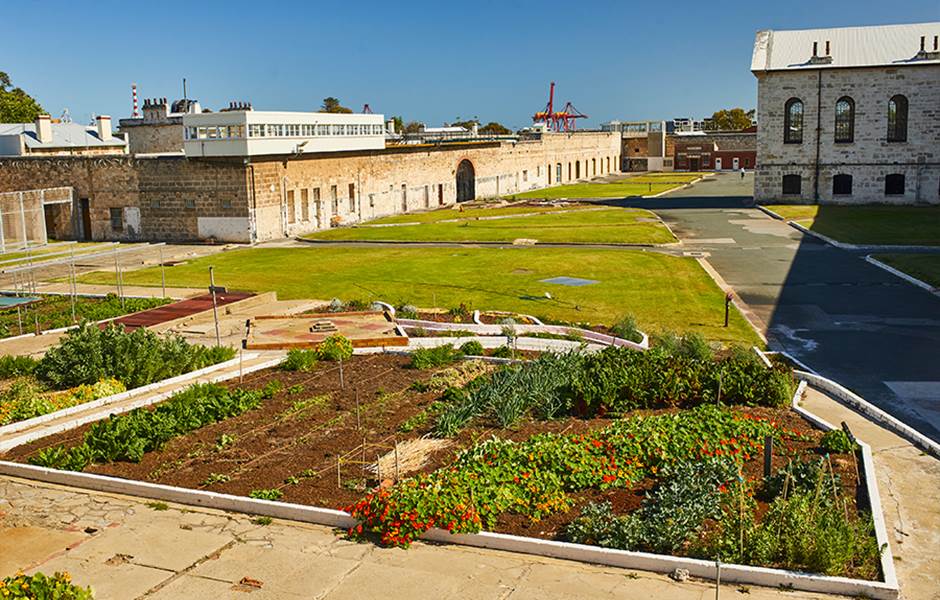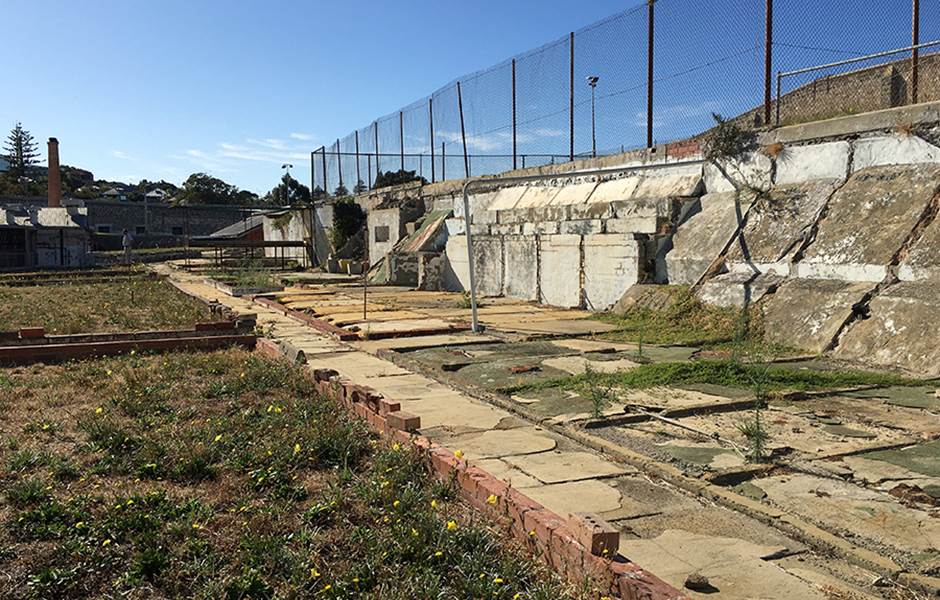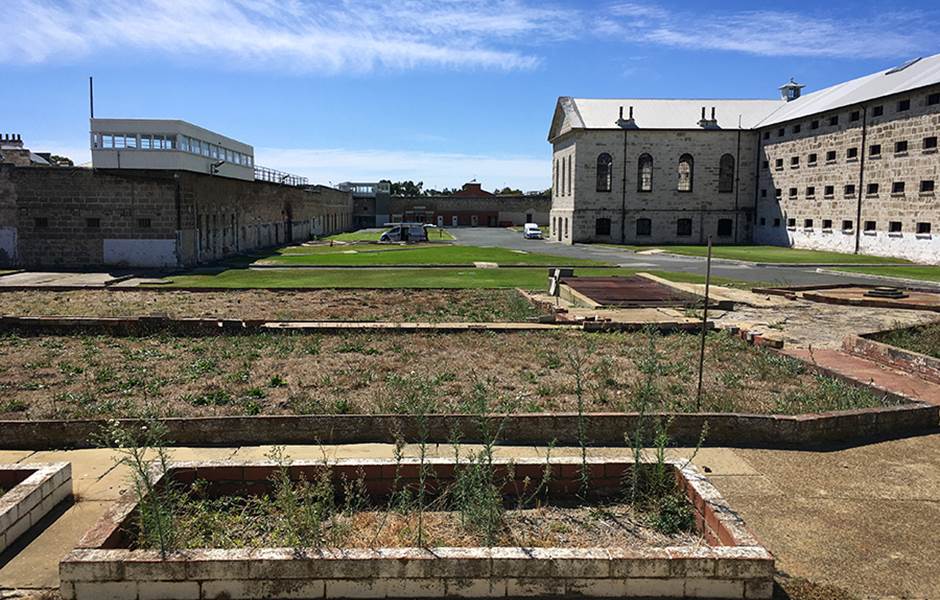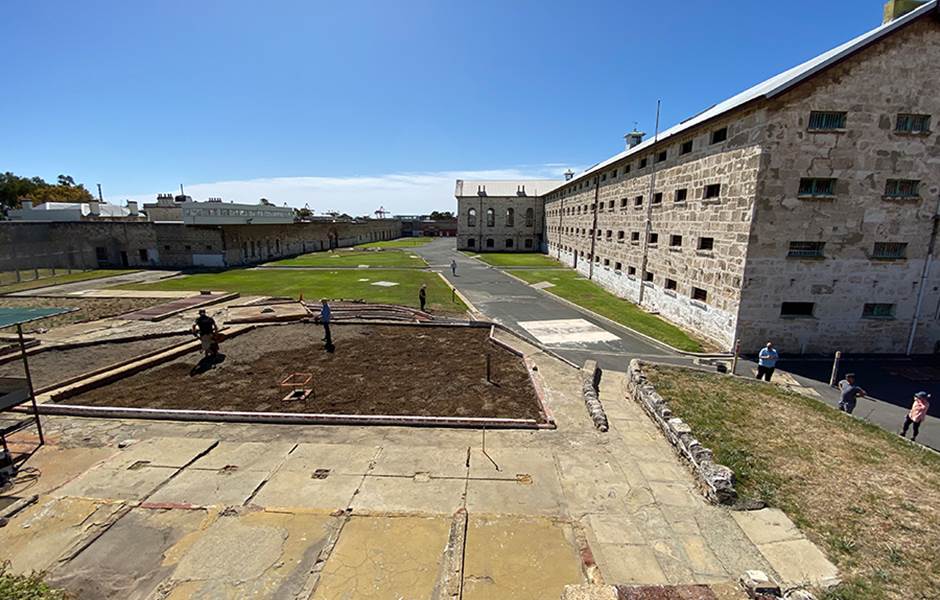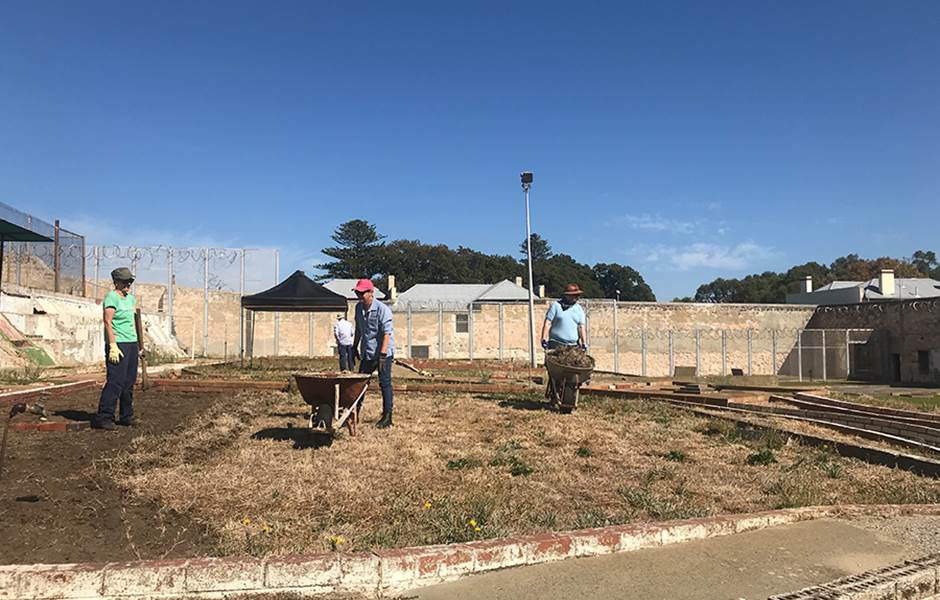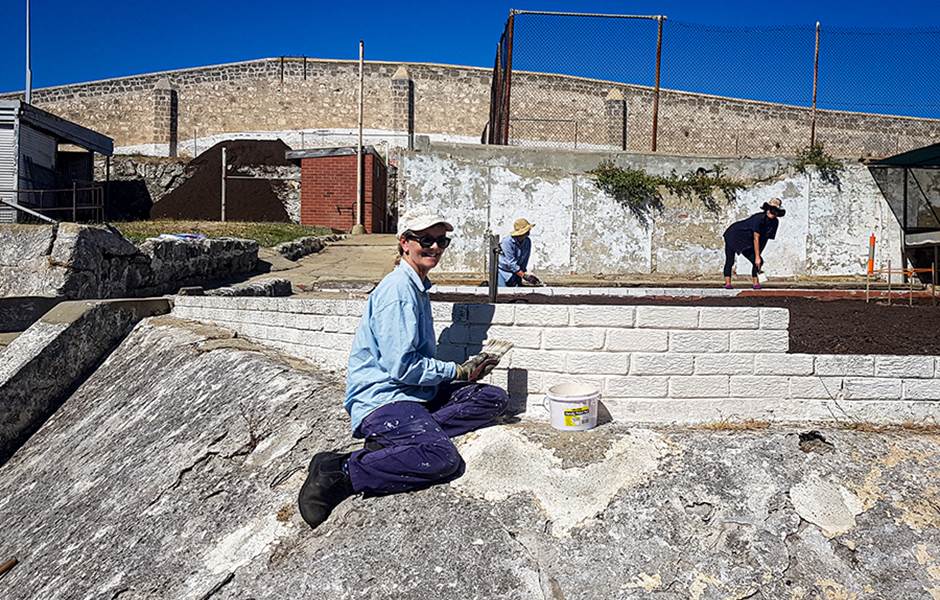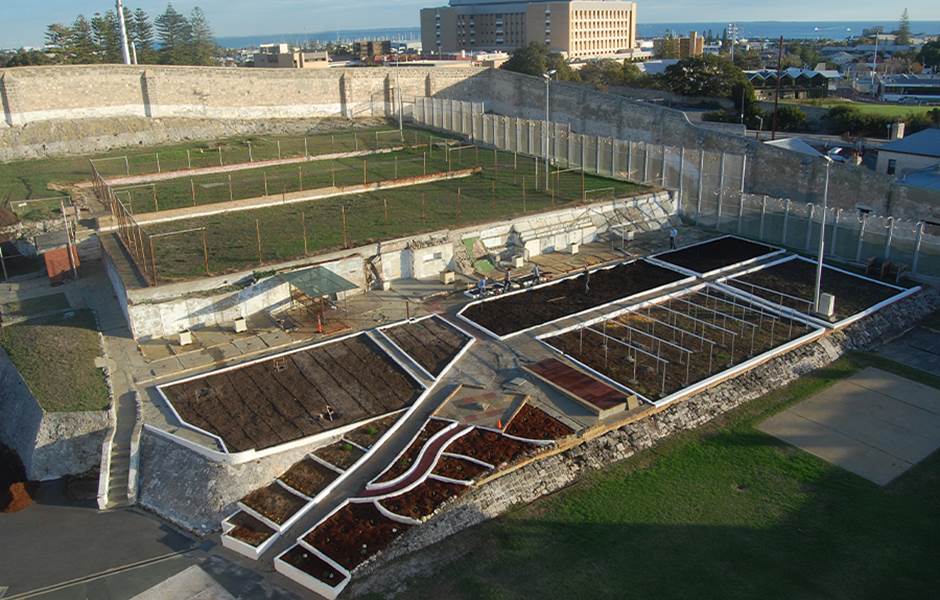
Canteen conservation and refurbishment - 2023/2024
Project aim: Undertake conservation works and refurbishment to the Old Canteen, located at the northern end of the Parade Ground, to provide a work space for the curatorial and archaeological team.
Scope: Cement render, drummy plaster and acrylic paint will be removed from the brickwork walls and repairs will be undertaken using lime mortars. A new lightweight steel framed ramp and walkaway will be installed to the front façade to allow easy access to the rooms. Door and joinery will be refurbished and the internal ceilings and walls will be repainted. A new ducted extraction unit will be introduced to the laboratory room to safely discharge fumes and capture dust produced by dry cleaning of historic objects. The existing outdated UAT in the eastern portion of the building will be refurbished.
EMERGENCY GENERATOR WORKS - 2023
Project aim: Replace the outdated emergency generator with a new generator, which is vital to the operations of the Fremantle Prison, for use during site-wide power failure. The project aims to facilitate the long-term plans for the car park re-design as outlined in the Landscape Management Plan.
Scope: A new main switchboard and emergency generator will be installed to replace the existing switchboard and diesel generator. The switchboard will be located adjacent to the existing Western Power Substation as per Western Power requirements. The generator will be located behind the Stables, to respect the significant sight lines of the Terrace as seen from Fothergill Street, Fairbairn Ramp or the Fremantle Oval, and to provide ease access for future maintenance. Additionally an archaeologist will conduct onsite archaeological monitoring of the ground disturbing works associated with the installation of underground electrical services.
No. 4 and 6 The Terrace re-roofing and civil works - 2023
The duplex at 4 and 6, located at the northern end of the Terrace was built sometime between 1898 and 1906 to accommodate additional female warders when part of the Prison complex was adapted for female prisoners in 1896. From this time until the Prison’s closure in 1991 the cottages were used to accommodate both male and female Prison officers and their families. From 1994 to 2020 the cottages were used for short-term holiday accommodation. Currently No 4 and 6 are vacant.
Project aim: Re-roof the cottages and outbuildings and install a dedicated storm water system to service the buildings and the adjacent car park.
Scope: The roof sheeting and rainwater goods of the main and outbuildings roof will be replaced with new corrugated galvanised steel to match existing in profile. Soak wells and gravel breathing striping along the south limestone walls of No. 6 will be installed to allow water to drain away from the building. Chimneys will be strengthened for seismic upgrading and conservation works will be undertaken to remove cement repairs and acrylic paint and re-render with lime based mortar and lime wash. Ground levels in the rear courtyards will be adjusted to fall away from limestone walls and pavers will be replaced. The car park located in front of the Female Division will be resurfaced, in line with the recommendations of the Landscape Management Plan. Tender for the works is in progress.
NEW DIVISION SHELTER - 2023
Constructed from 1904, New Division demonstrates the historical, albeit short lived ‘separate’ system in which inmates were isolated from one another. Prior to the construction of the existing simple timber-post shed that provided New Division inmates shelter during yard time, a 30-unit radial exercise yard known as ‘the cage’ stood in the yard. Unlike the current open structure, the radial yard continued to separate prisoners once they left their cells and allowed guards to keep close watch. The radial yard only stood for a short period before being demolished.
Project Aim: Undertake structural stabilisation of the existing timber-post shelter shed to allow visitors returned access to the area & undertake archaeological investigations into possible remains of the radial yard.
Scope: The existing timber post shelter shed was conserved and structurally strengthened to make it safe for staff and public access. The shelter has new roof sheeting and timber was treated and repainted. A ground penetrating radar survey was undertaken and suggested evidence of the radial exercise yard remains in-situ. Archaeological investigations were undertaken by the prison to further investigate the former radial yard footings, which will assist with better understanding the construction of the yard and form a base for heritage interpretation. The shelter was braced and fenced off in accordance with structural engineering advice in 2020. Works commenced in March 2023 and were completed in March 2024.
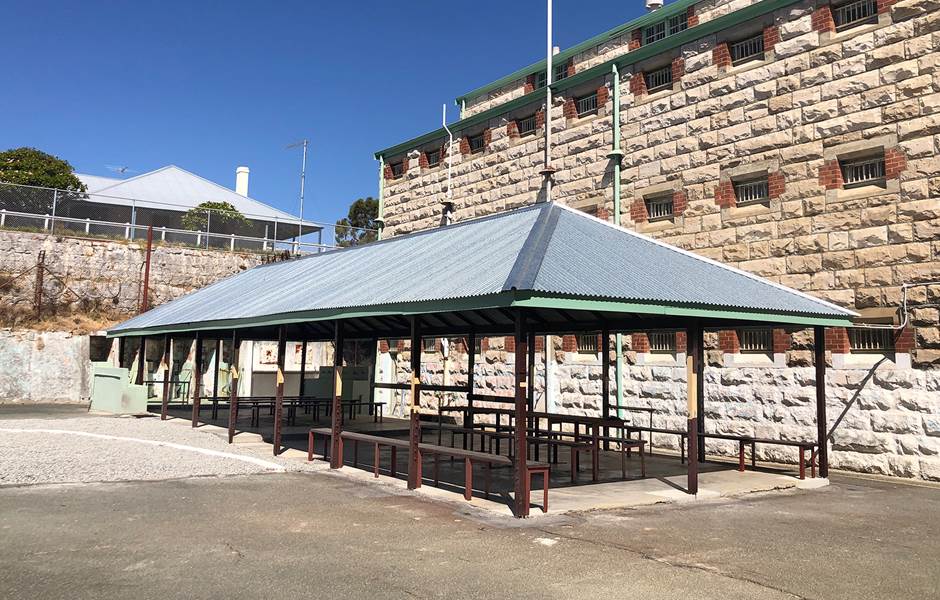
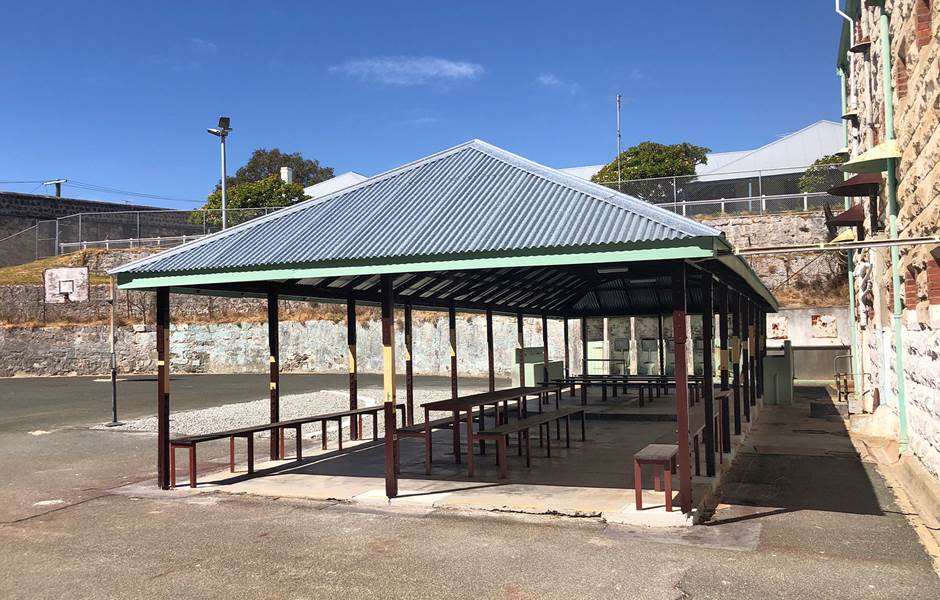
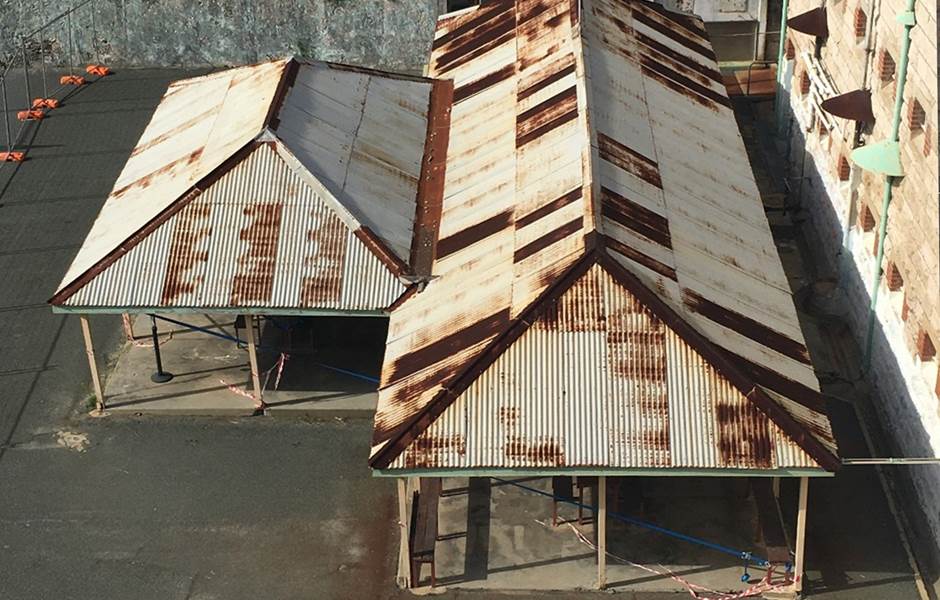

MAIN CELL BLOCK CONSERVATION WORKS - 2022
Built in the 1850s by convict labour, the Main Cell Block has exceptional heritage significance. It stands today largely as it was built, with minor modifications occurring over the years during its occupation by convicts and its use as a prison. The authenticity of the four-storey limestone structure contributes greatly to Fremantle Prison's World Heritage status as a part of the Australian Convict Sites serial listing. Some of the modifications to the cell block throughout its life have contributed to rising damp and subsequent degradation of timber floors and limestone walls. Such modifications include the application of cement render and covering of the original ventilation system.
Project Aim: Improve the ventilation in the Main Cell Block and repair damaged timber and limestone. The project also aims to improve the experience of visitors through increased access and interpretation.
Scope: Timber cell floors will be repaired to enable cells with damaged floors to be re-opened. Cement render will be removed from limestone walls where causing damage, which will improve the ventilation of the walls and allow moisture out, which is absorbed from the ground. Minor-reversable interventions to select thresholds on the ground floor will be undertaken to allow universal access to visitors to improve inclusivity of tours. The works will also sympathetically introduce a new fire sprinkler system to align with current standards and protect the building in the event of a fire. The project will also provide a base for future interpretation in the cell block.
Contractor: Colgan Industries
Parade Ground Redevelopment Project – 2021
In 1857, works were undertaken to use leftover limestone deposits from quarrying in Fremantle Prison to construct and establish the levelled Parade Ground. This first iteration of the area was vastly larger than the area we see today, as overtime buildings such as the Main Cell Block and the West Workshops have been constructed around its perimeter. The area was originally unembellished but possibly as early as 1862 the area was slowly landscaped with grass and garden beds.
Project Aim: Water run-off from the Parade Ground falls towards the surrounding buildings resulting in rising damp and damaging stonework and timber floors. This project will seek to regrade drainage away from the buildings, as well as interpreting many earlier iterations of footpaths and gardens that are no longer there.
Scope: Roadways will be resurfaced in a new sympathetic porous gravel to allow water to drain away quickly. Garden beds will be reinstated and trip hazards removed to the norther half of the Parade Ground to accommodate large scale events. The project will look to interpret former footpaths and where convicts were ‘paraded’ before work, alongside installing a reticulation system.
Architect: Griffiths Architects
Contractor: Kardan Construction
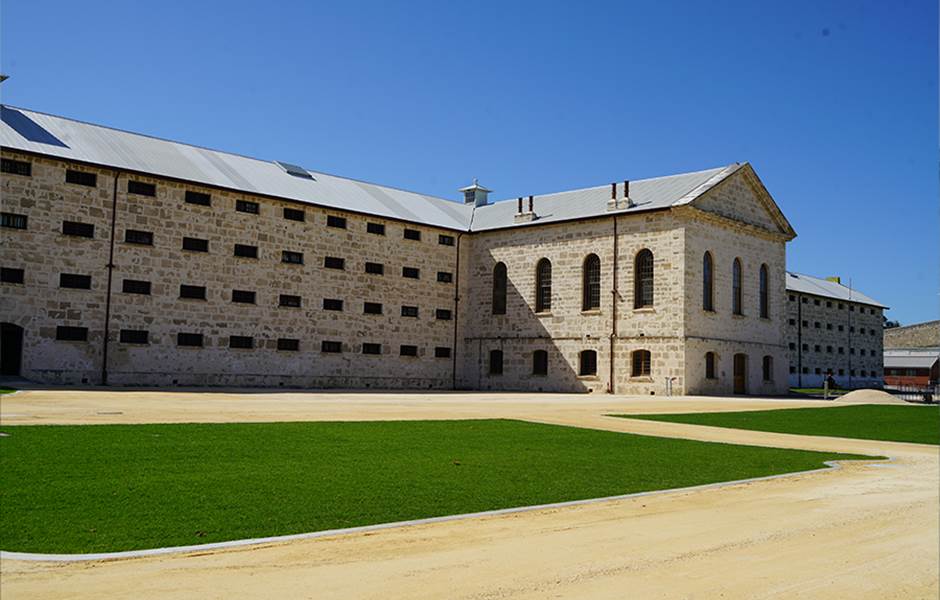
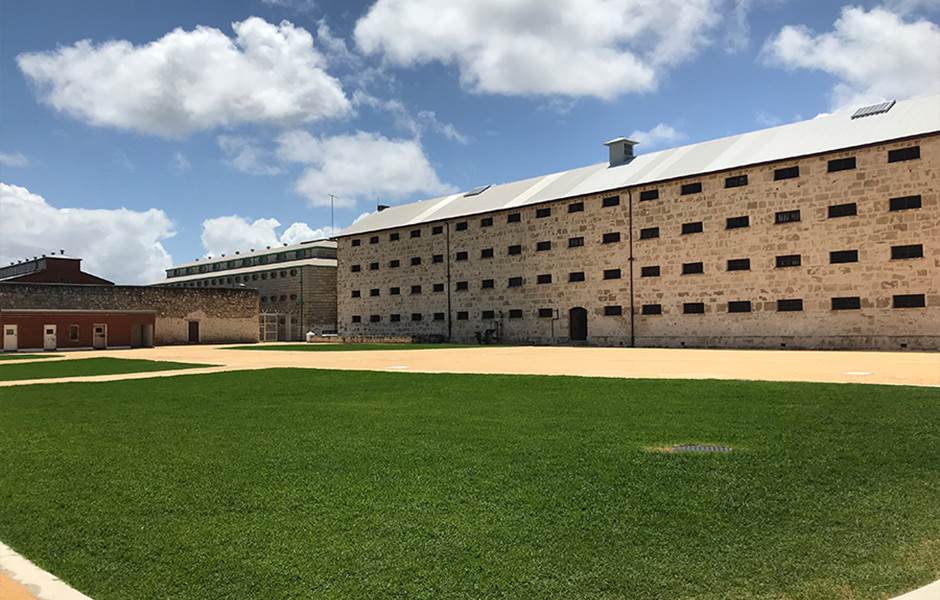
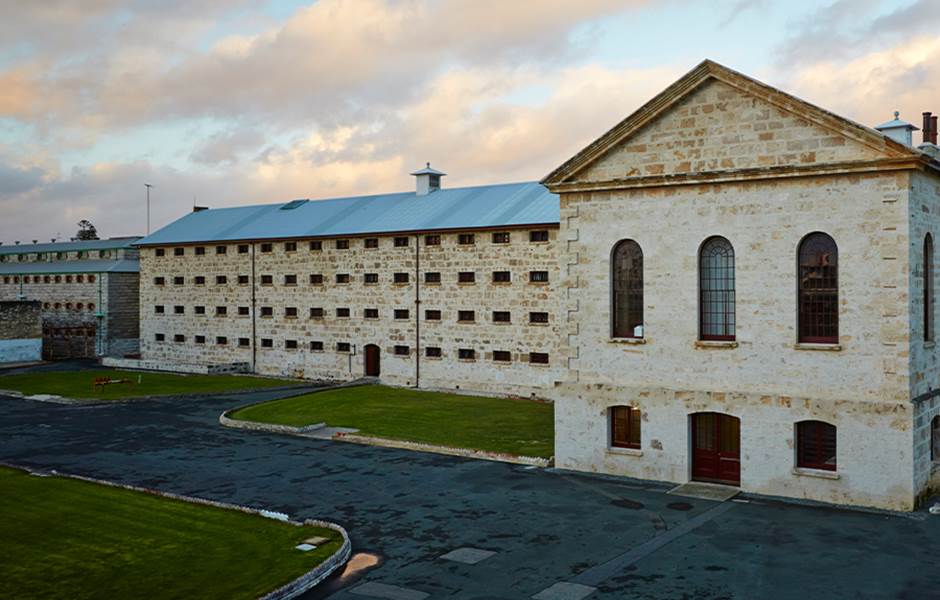
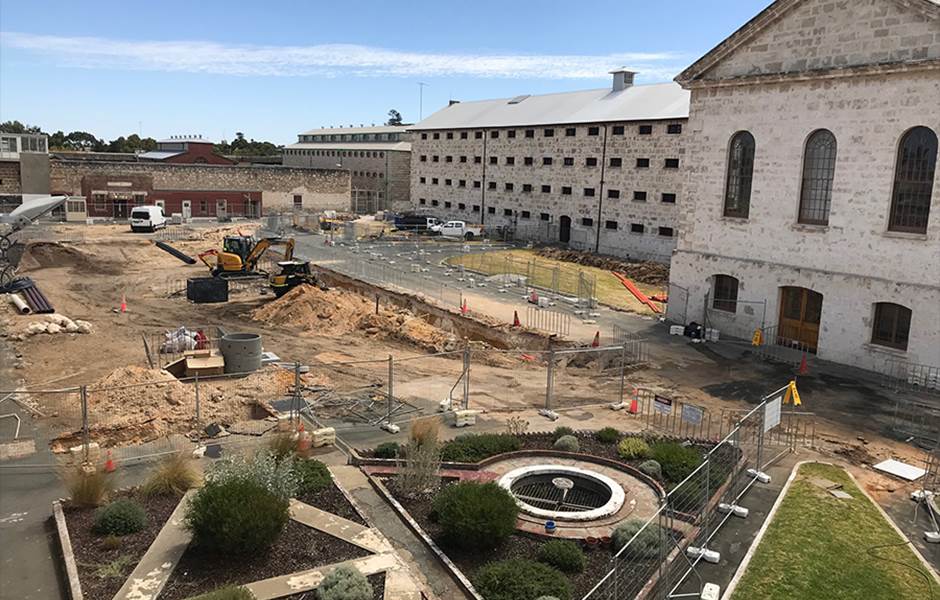
Commissariat Conservation Works – 2021
The Commissariat is located in the basement of the north wing of the Main Cell Block, and is a purpose-built, convict era structure designed to house goods and supplies for distribution to Depots located throughout the State (such as Toodyay, Albany, Guildford and Port Gregory.) In 2019, a structural condition report revealed that the 1907 concrete roof over the North Yard had become so corroded that it was no longer safe to have visitors enter the space below. The area has been excluded from tours since this time.
Project Aim: To remove sections of badly damaged concrete over the North Yard of the Commissariat, and conserve the surrounding rooms and offices.
Scope: The works made the North Yard safe once again for visitors to enjoy, alongside providing universal access to the basement of the Main Cell Block, plaster repairs and reinstating missing door and window sets. Works commenced in May 2021 and were completed in July 2022.
Contractor: Kardan Construction
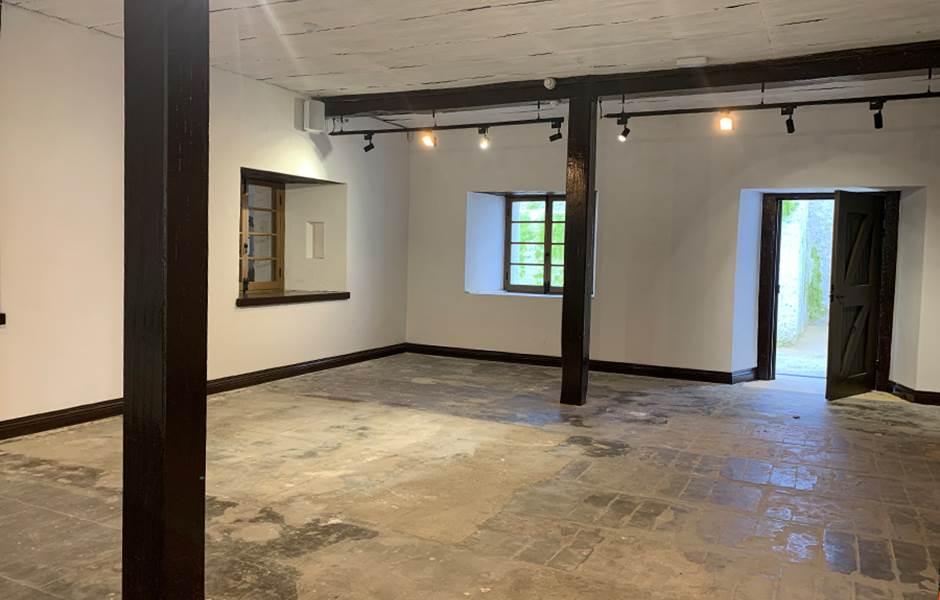

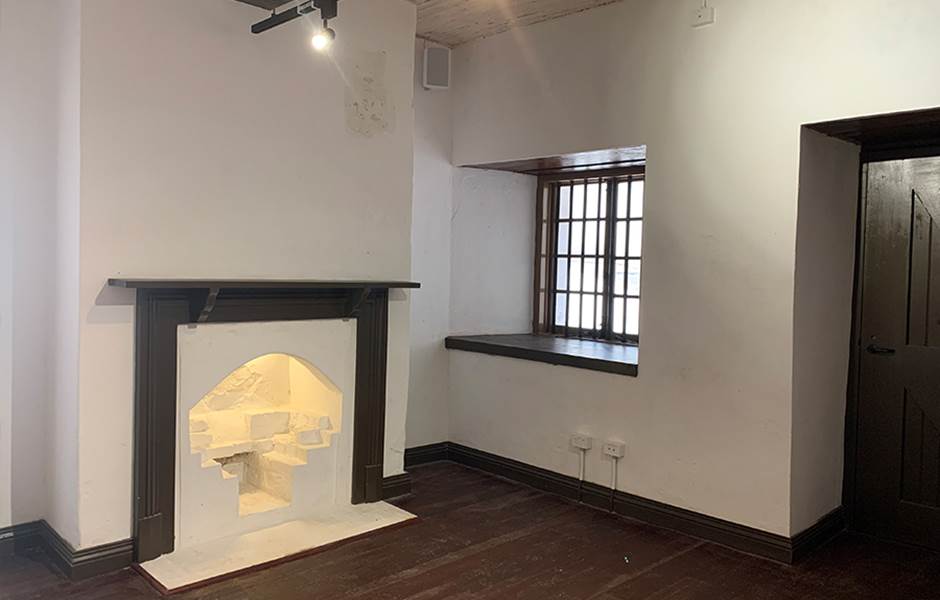
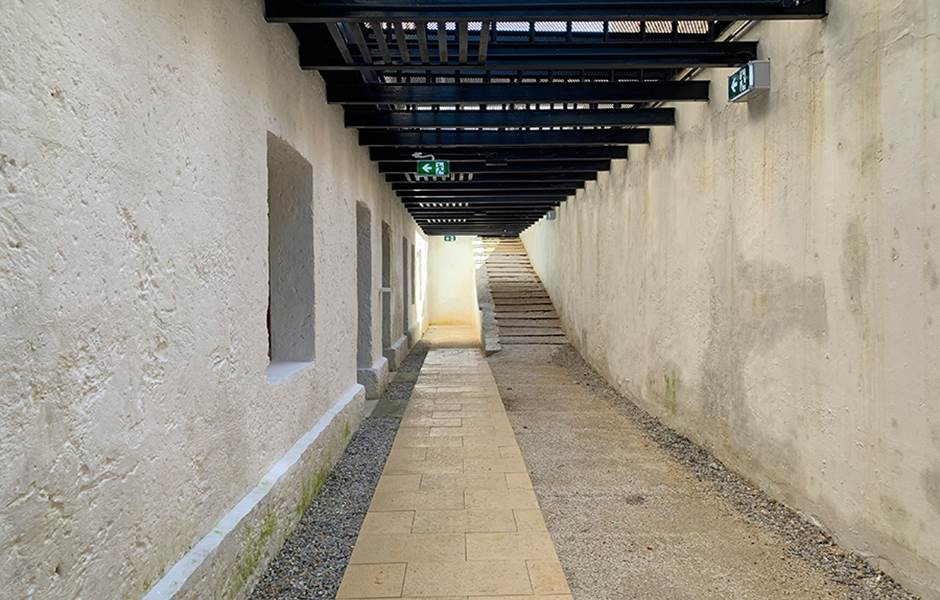
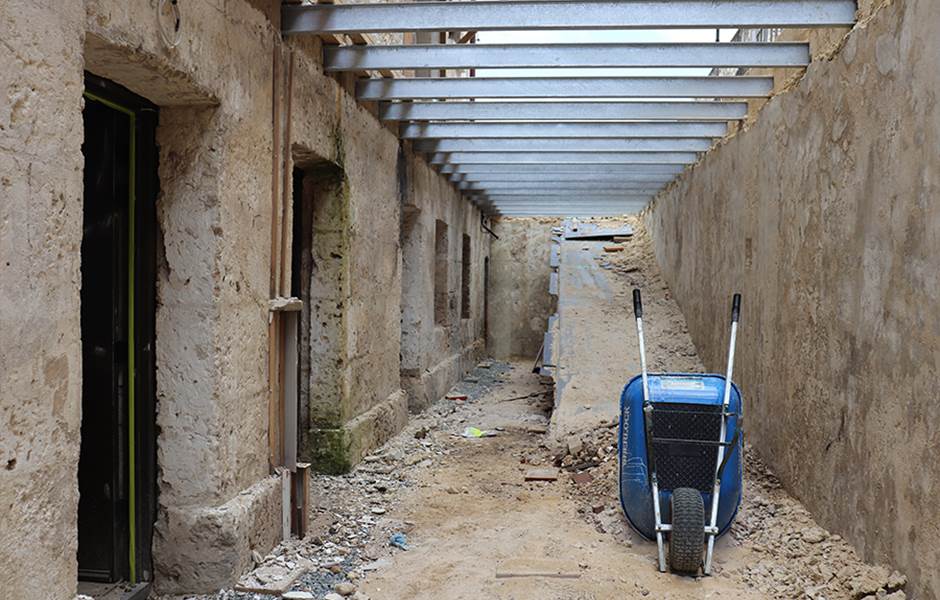
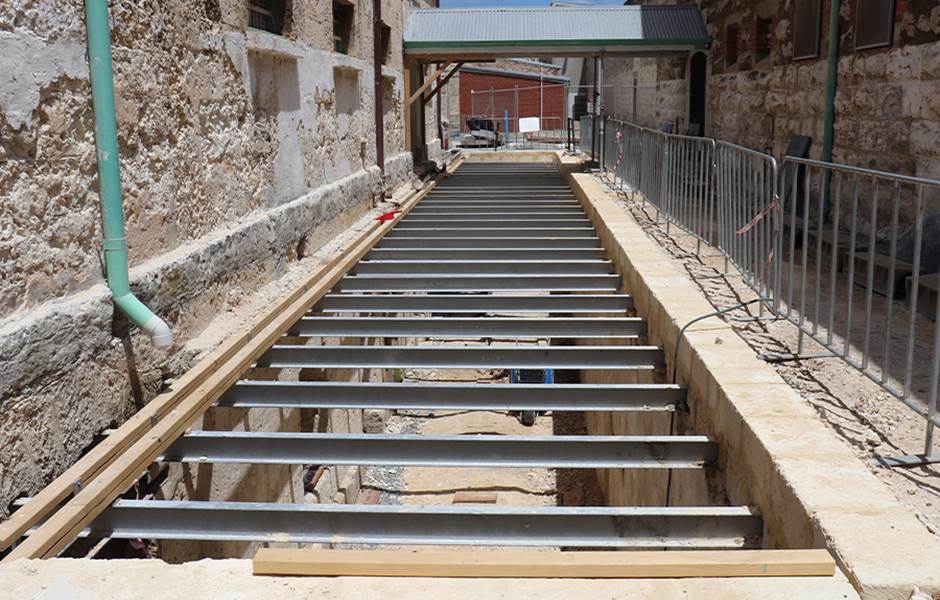
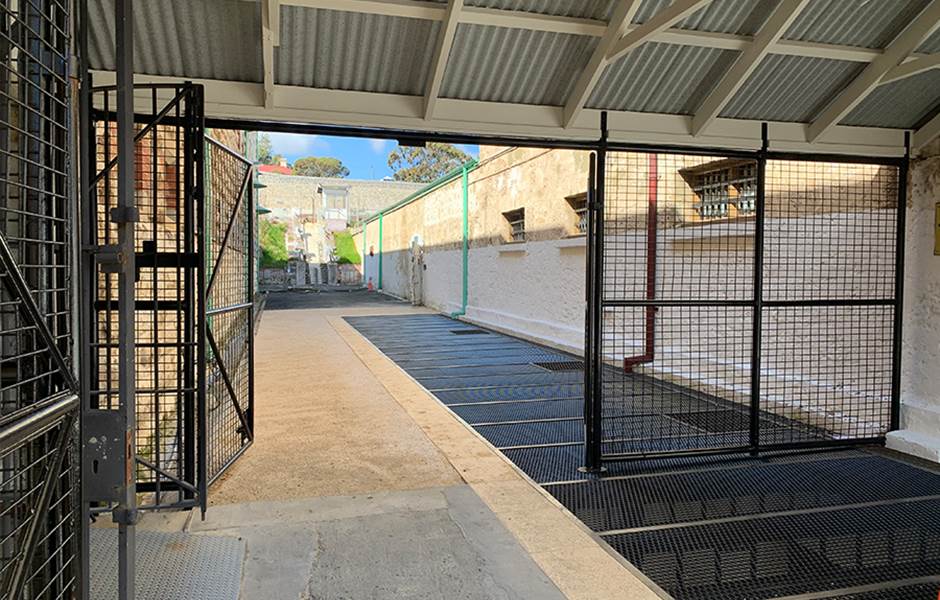
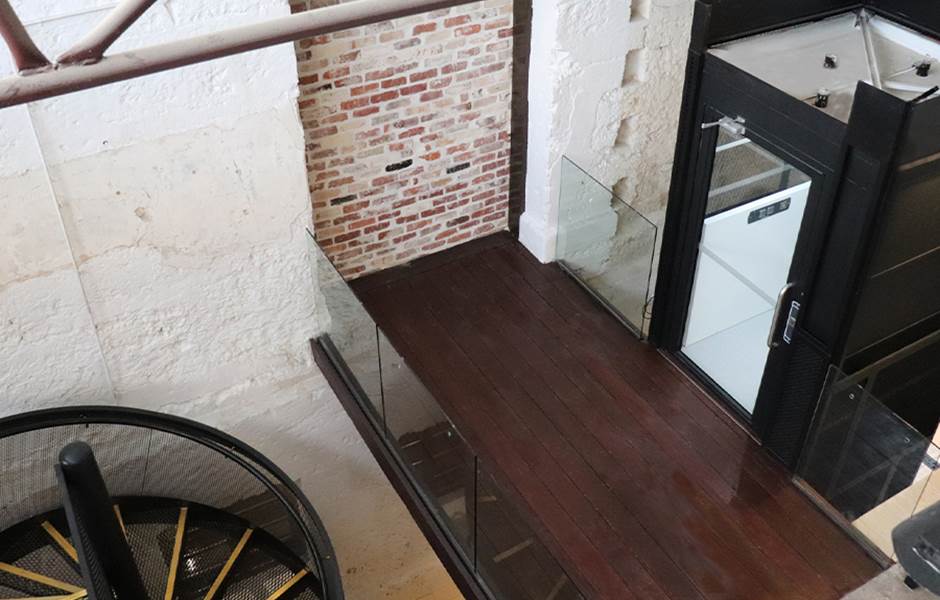
The Hospital Structural Remediation Works - 2020
The Hospital was constructed between 1857-59, but was not the first Hospital built at Fremantle Prison. This function was originally performed in ‘Wooden Division’ constructed in 1854, which was a narrow timber building located in the south-west corner of the Parade Ground. Wooden Division was demolished shortly after the Hospital building that we know today was constructed.
Project Aim: Urgent structural repairs are required to all of the timber verandah posts around the building, alongside remediation of damaged lime-based plaster and floorboards.
Scope: The works repaired all of the rotten timber post bases, and all of the deteriorated lime plaster around the building caused by rising damp and acrylic paint which has trapped moisture in the walls. Works commenced in December 2020 and were completed in March 2021.
Architect: Dar Studios
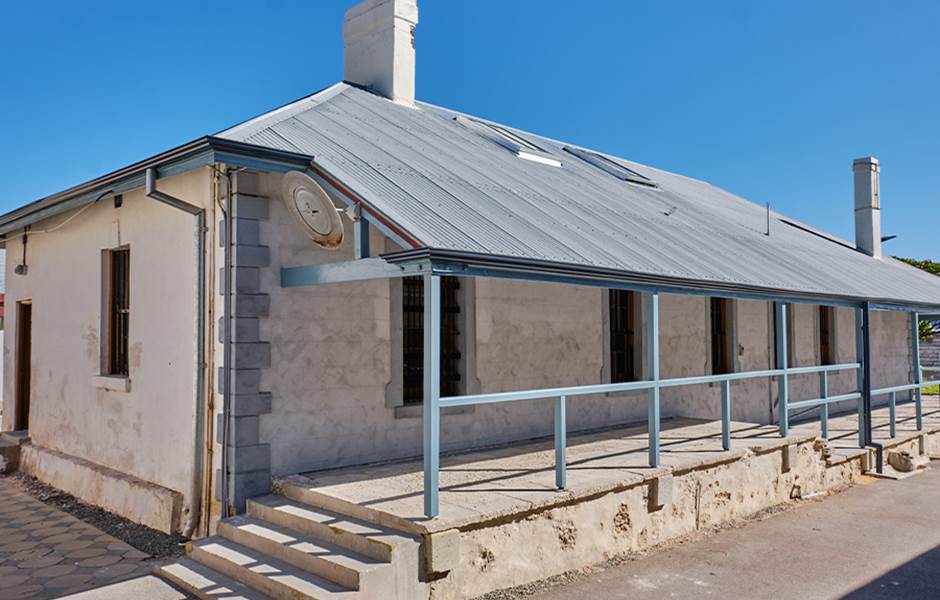
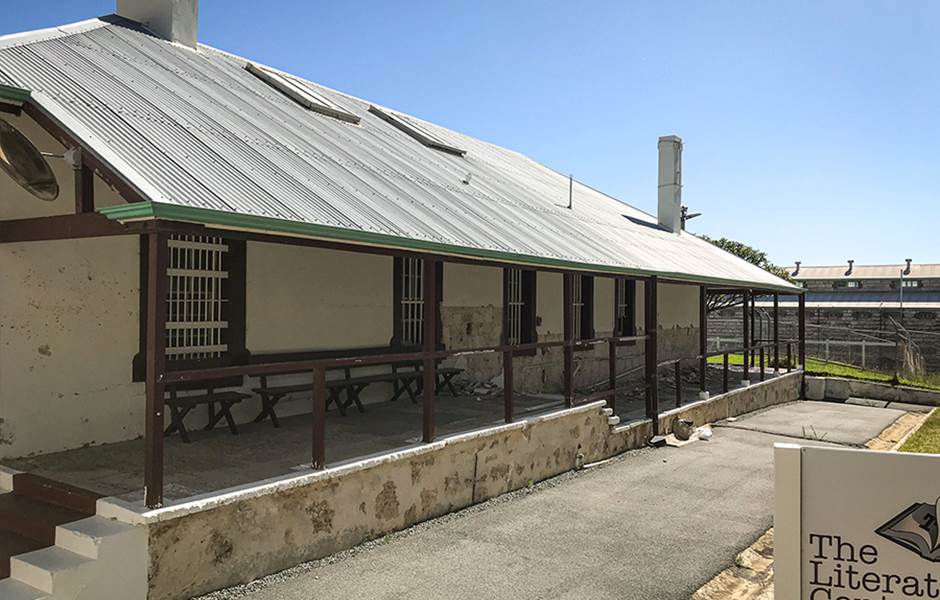
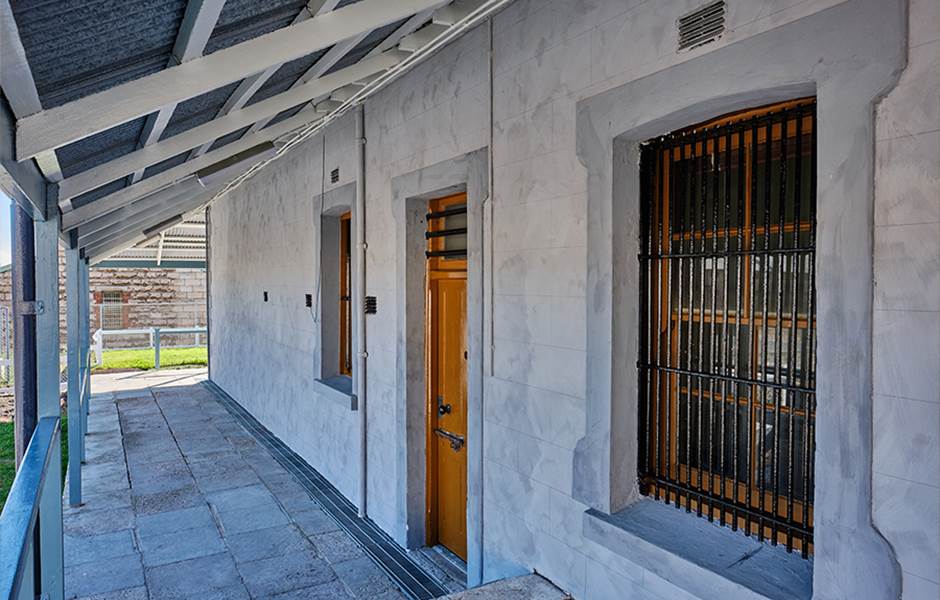
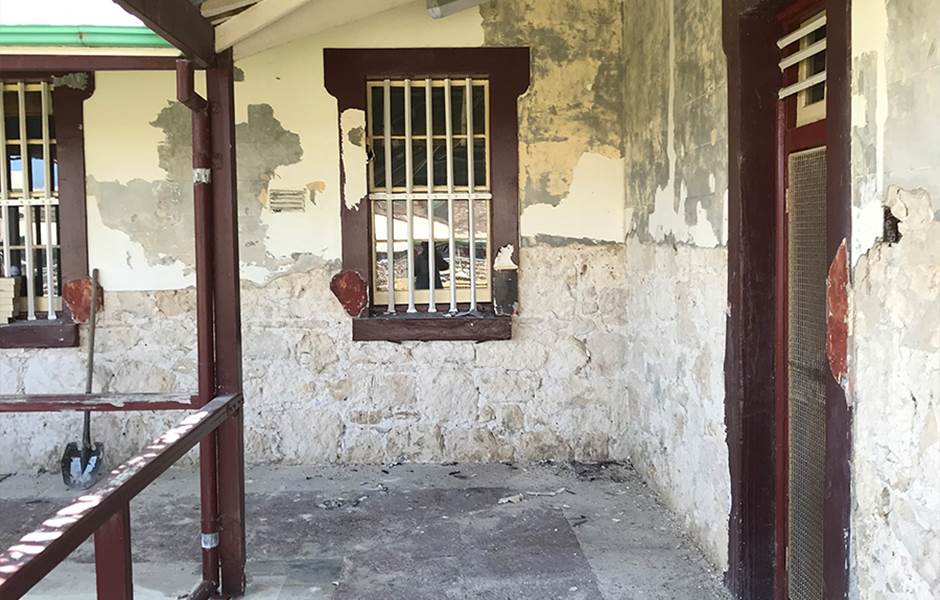
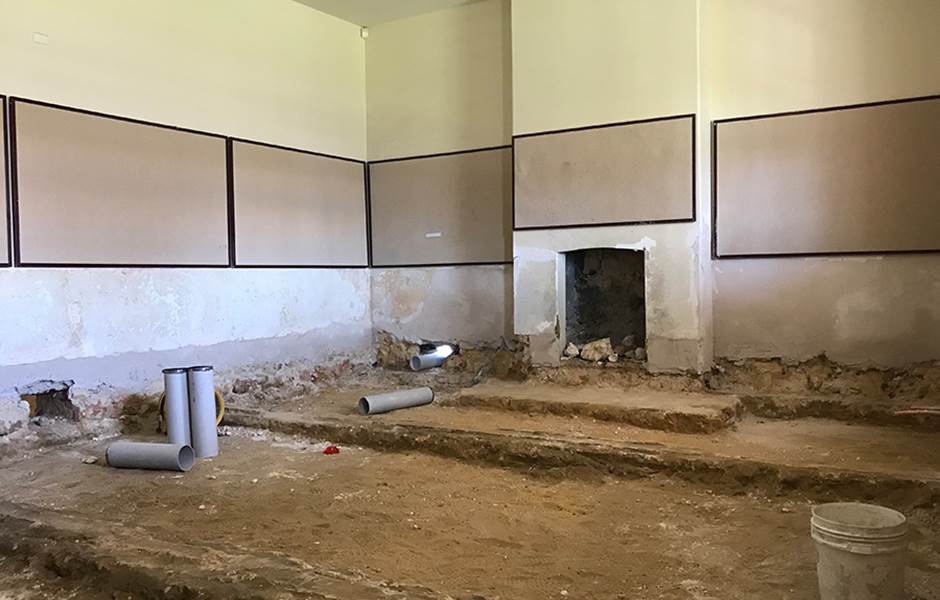
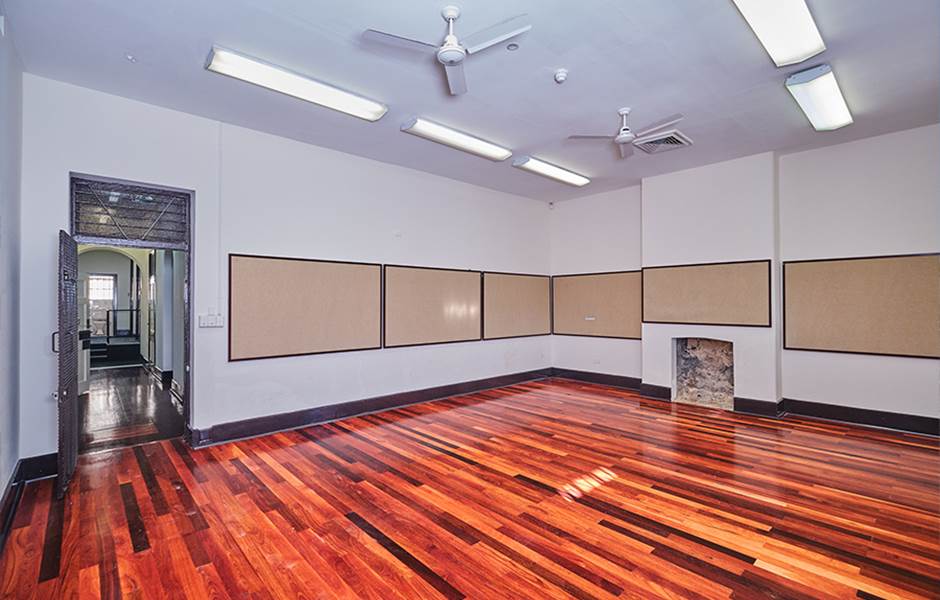
Number 10 The Terrace Verandah Repairs - 2020
The verandah at House Number 10 was constructed in the 1870s, nearly 20 years after the house itself was built for the prison’s Chaplain. A number of modifications occurred to the house at this time, inclusive of a new central door at first floor level to allow access out onto the balcony.
Project Aim: Urgent structural repairs are required to the timber posts of the verandah which have suffered from extensive rot.
Scope: The works will make good to deteriorated sections of Jarrah timber, replace the concrete slab at ground level with a timber deck, and repaint the entire structure to match the original colour scheme.
Contractor: Multitech Contracting
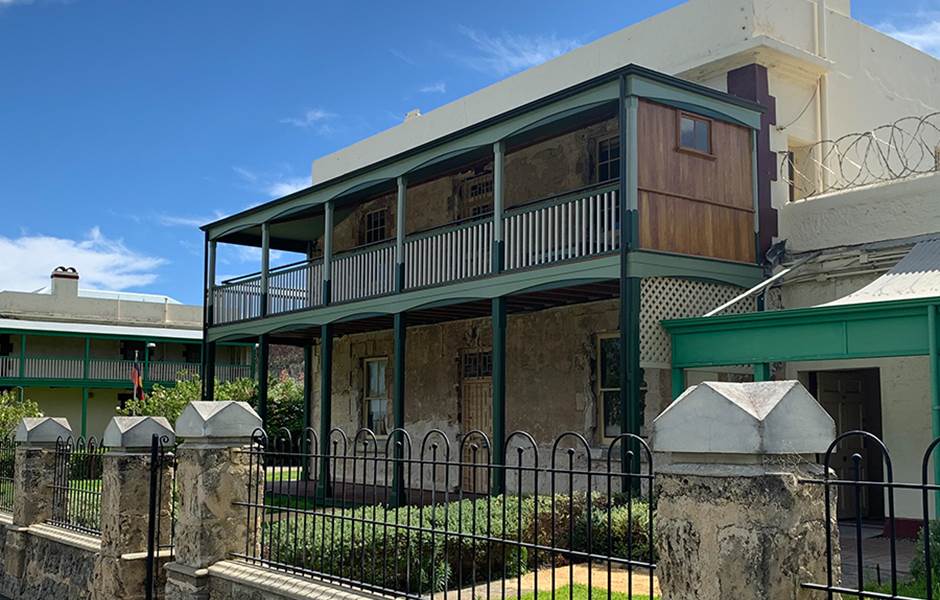
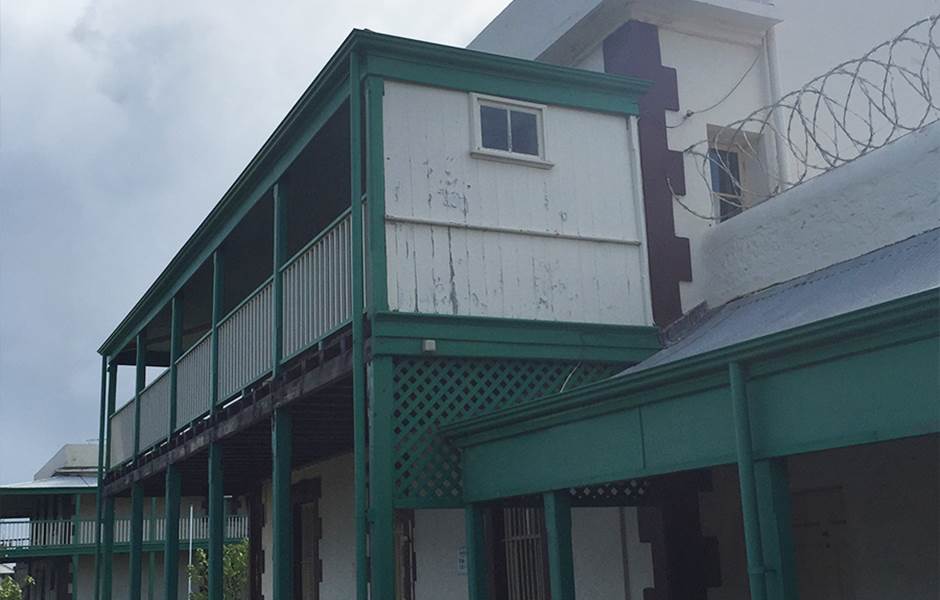
Prison Garden Revitalisation - 2020
Garden beds were established on the South Knoll in the early twentieth century, providing food and work for the prisoners. The gardens supported vegetables, flowers, cows and other livestock. Prison records show that in the following year 21,687 pounds of vegetables were produced. Following the Prison closure in 1991 the gardens were left to the elements, and were overgrown with weeds. During the 2020 Covid-19 shutdown Prison staff worked to revitalise the gardens.
Works included:
- Clearing weeds, rubbish and building rubble
- Soil preparation
- Reticulation and water supply
- Repair and lime-washing of brickwork
- Reconstruction of the trellis system
- Planting
Planning is currently underway to manage the Gardens so that they authentically represent their past use.
